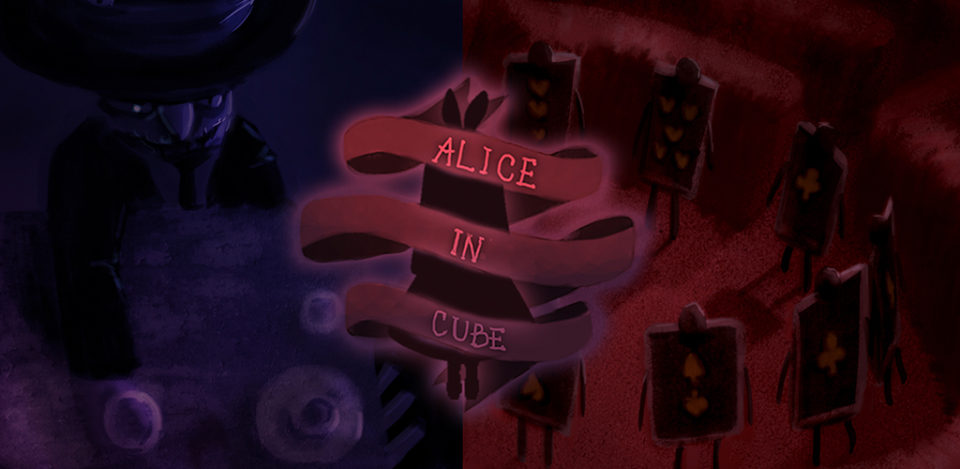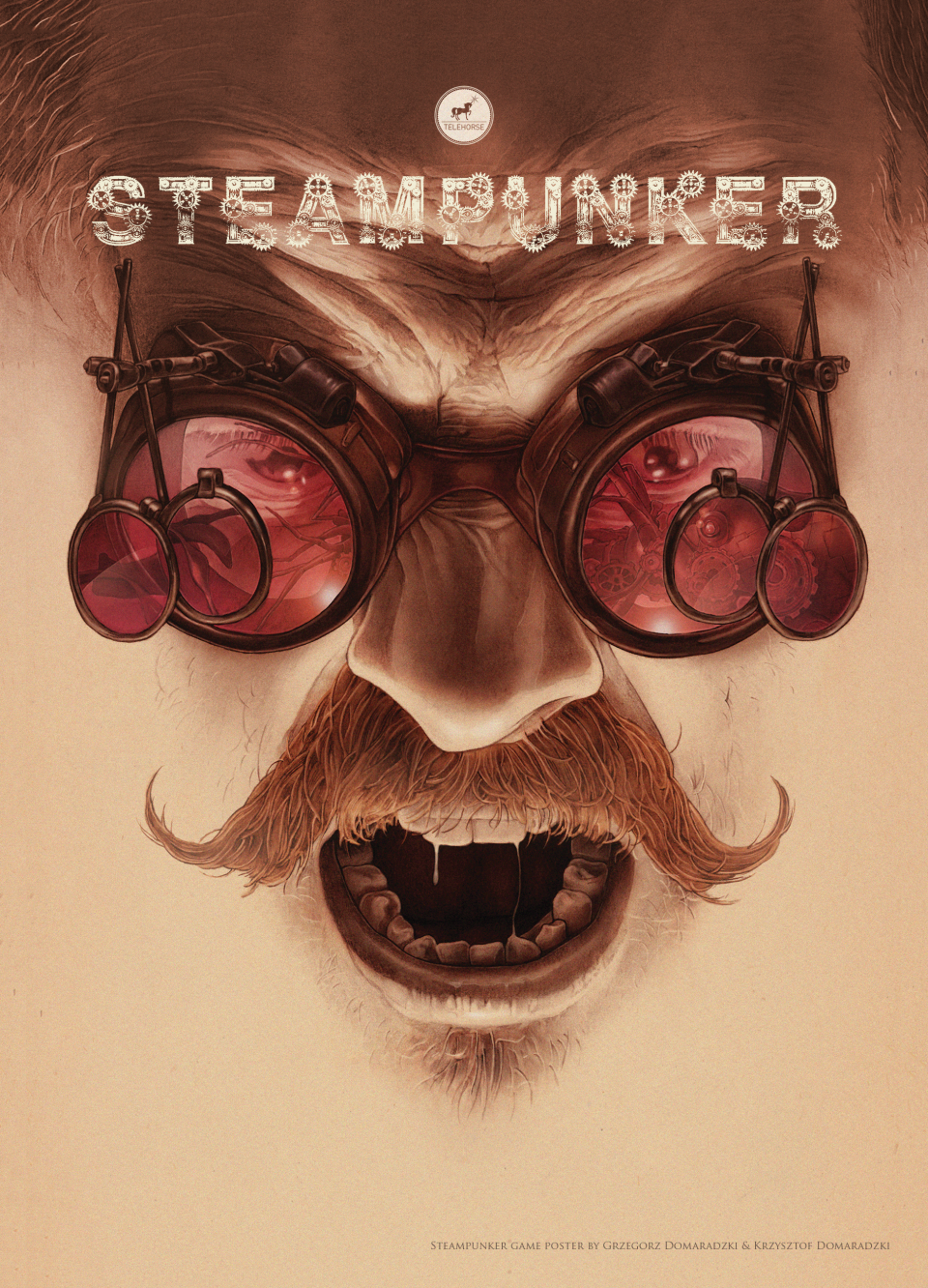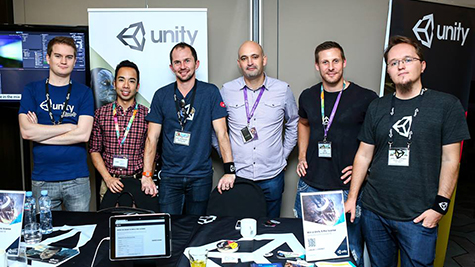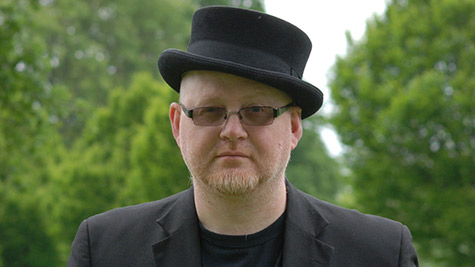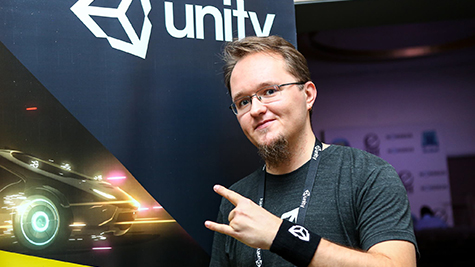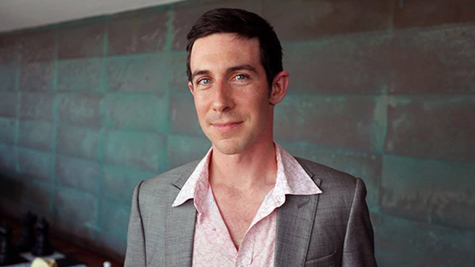Moore’s Law is still in full-swing since Gordon Moore first made his now-famous observation in 1965. Technology continues to change at a nearly breakneck pace – not only getting smaller and faster, but also more advanced and intricate. From artificial intelligence to high fidelity, it can be difficult to stay on top of everything. In Casual Connect Kyiv’s Tech track, attendees can expect to receive numerous insights to help them keep on top of the latest technology so they can make their games the best they can be.
main
DevelopmentExclusive InterviewsGame DevelopmentIndie
Alice In Cube: New Angle Of Puzzles
A director, 2 programmers, an artist and a musician - they’re all from the team of 5 students from Ajou University in Korea, who made the puzzle game of Alice in Cube that would challenge even a seasoned puzzle games player.
“The reason why I created this team was so simple: I just wanted to make games. I was seeking for friends who were passionate about games, like myself, and four months later I finally found them all”, says director and project manager Kim TaeWoo.
ContributionsDevelopmentGame DevelopmentIndieOnlinePostmortem
Steampunker: How Visual Tools Helped an Amateur Make a Game
“Amateur - a person who engages in a study, sport, or other activity for pleasure rather than for financial benefit or professional reasons. Compare professional. First things first. Let’s start with who I am, to provide enough background for what is to follow”, says Mariusz Szypura, the creative director of the Telehorse studio, as he shares the story of Steampunker.
Belgrade 2014Video Coverage
Angelo Ferro: Data is Essential to Success | Casual Connect Video
At Casual Connect Eastern Europe 2014, Angelo Ferro stated, “When I first started getting feedback from developers, my immediate reaction was that people really don’t like analytics, but analytics is important”.
Belgrade 2014Live CoverageVideo Coverage
Oscar Clark: The Social Interaction Frontier | Casual Connect Video
“Getting found right now really matters,” Oscar Clark explains during his session at Casual Connect Eastern Europe 2014’s Unity Day. “It’s really important. There are more games out there than I can possibly play in my lifetime.”
As evangelist for Everyplay, Oscar Clark considers his work to be the perfect opportunity to share his passion about making games and the way communities crystallize around them. It allows him to spend his time talking about the community of players who are recording and sharing their favorite moments of gameplay on iOS and Android devices. He claims, “This form of social interaction seems to me the next frontier of game communities. The potential for asynchronous video playback of what your friends have done is massive and could eventually exceed PC-based services.”
Having Fun
Oscar’s time and interests chiefly involve games; he describes himself as “almost 100% gamer.” He loves playing, designing, and writing amateur tabletop games and other activities from LARP to laser tag; but rarely gets the chance with his busy speaker schedule. His work at Everyplay provides the opportunity to think about the nature of game design, discovery, monetization, and the role of social communities. With this type of job, he doesn’t feel the need for other interests. But his family helps keep him balanced, and he has great pride in his daughter as a second generation geek!
It is no surprise to discover that he plays on all platforms and owns all consoles, except WiiU. Recently, he returned to PC gaming after acquiring a Surface Pro 3, which he calls “the ultimate awesome.” He says this is the PC that lets him tell his Mac friends, “My tech is better than yours.”
Oscar came to console gaming from PC with the original Xbox. Prior to that, his passion was creating his own gaming PCs, or making his own board games and tabletop RPGs. Owning all the consoles allows him to see where the important differences are being made. His PSPlus subscription has him coming back more than Xbox One does, but playing Steam games on Surface occupies most of his gaming time currently.
Experience Building
The work he does now is the culmination of all he has learned throughout his career. He worked in some of the earliest online game communities, such as Wireplay from British Telecom, where he established a basic understanding of how online interactions and communities flow and function. Working as a global lead for Hutchison Whampoa’s Three UK allowed him to learn how mobile audiences consume game content and what makes players different when playing on mobile rather than on PC. His work with Playstation Home as Home Architect brought with it the knowledge of how content development attitudes have adjusted to social and freemium experiences. And his time with Papaya Mobile revealed how social mobile games had evolved. At this point, he has reached the perfect position to disseminate what is happening in the social mobile world.
The most enjoyable aspect of working in the games industry for Oscar is the opportunity to meet and work with other game developers. He says, “I’m incredibly lucky to meet guys whose talent makes me feel like an amateur. Whether they are old-school RPG designers or the newest indie genius, it’s a real privilege to be able to talk about the industry and making games.”
He has had a number of experiences that he considers highlights in his career. Unity buying Applifier was a great tribute to the work of the team in Helsinki. Speaking at GDC San Francisco for the launch of his book was another exciting moment. He also got to be part of a UK mobile veterans version of the GangNam Style video for Mobile Entertainment. He emphasizes, “It was very silly and so much fun to make with a lot of old friends.”
A Player’s Journey
Oscar notes that discovery is the problem everyone in the games industry is currently talking about, but he feels focusing on that alone misses the point. Instead, he points out players must take a journey from discovery to learning, where players decide if a game suits their lifestyle, and finally to engaging. So, in order to succeed, it is essential to adjust game design, playing style, and how we communicate value throughout the individual player’s journey, a process which requires understanding the audience and letting them help you share their values. He insists, “Look at the way Everyplay engages audiences. Look at how Unity Ads allow non-paying players to gain premium items for voluntarily watching adverts. These are not just fire-and-forget approaches; these are about engaging your players for their lifetime in your games.”
Mitigating this challenge is the reason Everyplay exists. The team in Helsinki is entirely focused on finding ways to help their partners be more successful. Oscar believes, “This is why our integration into the Unity Team has been so painless; both teams share a fundamental passion for making the games industry a place with better tools to allow developers to reach their potential.”
A Great Time in the Industry
He claims that there has never been a better time to make games. The tools available, including Unity, are spectacular. The communities that develop games are creative and collaborative as never before. Audiences are now global and are continuing to grow, both in number and in potential revenue.
However, the growth in content means there are now more games than any one player could possibly play in a lifetime. It has become essential to find new ways to be discovered, build brands, and develop a better understanding of what works and why. He sees Unity in a unique position to assist developers through allowing them to easily leverage all the available platforms, access new markets, adjust and build quickly, and continuously improve the aesthetic quality of the game experience. Oscar points out, “Even people like me, who don’t think of themselves as coder, can do amazing things in the platform.”
Oscar thinks Unity is already preparing for the future, they have invested in ways to help developers become even more successful in this extremely competitive space. Earlier this year, they acquired companies including Applifier for Everyplay and its Video Ads platform; Playnomics for their detailed player analytics; and cloud collaboration tool provider Tsugi. He exclaims, “What an amazing team to be a part of!
ContributionsDevelopmentGame DevelopmentIndieOnlinePostmortem
AVION Checkpoint: Recreating a Childhood Game In-Between a Regular Job
It was 1983; Ivan Mandic was in the second grade, when his father’s friend knocked on the door and came in with something wrapped in a blanket. A small black box with a rainbow, lots of cables, and a cassette player. A few days later, Ivan decided to create his first game. 10 circle(10,10,x), 20 x = x + 2, 30 goto 10 - a sample code from Spectrum BASIC. “There were no books about ZX SPECTRUM in book stores, but Father found one and rewrote it by hand. The whole book, including images,” Ivan recalls as he shares the story of his game, AVION Checkpoint.
avion.exe
In a few years, I bought a computer with my own money (no Commodore 64, it was Amstrad CPC 464). And in 1993, I turned on my first PC (286, 20MHz, 20MB HDD, 640KB RAM, Hercules), and this is very important: on the hard drive, I found a game called avion.exe. For a few days, I had been enjoying flying a small airplane up and down and throwing bombs on enemy bunkers. But while playing around with MS-DOS commands, I deleted command.com. It was a disaster. Darkness. End of humanity. No one knew what to do and whom to ask. After a couple of days in service, everything was fine, except one crucial thing: there was no avion.exe on the C: drive. From that day, I had the game in my mind. I’ve tried to make something similar in Pascal, Modula2, Delphi, C, C++, Java, JavaScript…no luck…
Because of 3D
In February 2014, for the umpteenth time, I decided to download Unity3D, but this time, I was prepared. I had downloaded some gamedev tutorials from YouTube (about 60GB) and already knew what a game object was, a prefab, how to rotate it, how to get input from keyboard, what Vector3D was, and how to make a Space Invaders clone. I had read anything and everything about Unity3D and game development. I got lots of experience with 3D Studio, so already had a clue about 3D objects, transforms and textures, which was all helpful.
In a few months and countless number of versions, I came up with a game similar to the one you can try on Google Play. Many people asked me: “Why the hell 3D, all good and successful games are 2D, have you tried Angry Birds?”, and every time my answer was: Because I need to make it 3D. It has to be 3D. I see it in 3D. End of story. This was the only time I didn’t want to listen to good and friendly advice.
Problems: Variety of Devices, Sound, iOS, and Lack of Time
The first problem was testing the game. Thousands of devices, OS versions from 2.3.4 to 4.4, small screens, big screens, screens bigger than my home TV, processors from single to quad core, memory, and skins…I decided to buy test devices: a SONY Xperia ARC as the low level device, SAMSUNG Galaxy TAB as the middle one, and Nexus 7 2013 as a high-end device. My goal was to make a steady 30+ FPS which would run easily on all test devices. But they don’t represent the whole world. On most phones older than four years and with processors slower than 1 - 1.5GHz, the game was unplayable. I didn’t find a way to check processor or memory on devices and to scale resolution/number of objects/textures to achieve at least 30 FPS, so I decided to limit the Android version to 3.0 or higher hoping that newer devices will have the higher OS version. This turned out to be a good decision.
The second problem was sound. I have worked in various areas of the IT industry, but I never touched sound. My biggest involvement in computer sound was to play Pink Floyd or Metallica in WinAmp. Luckily, my brother Vladimir Mandić is an MC in Czech Republic, so he sent me a sample which is now the main theme in the game. But this is a favor done for a family member. I still need proper sound effects and background music, and I can’t ask my brother to make changes or try something else a few times a day. So I will need to sit down and learn something about melody and harmony.
The third problem is the iOS version. Exporting from Unity, importing to xCode, compiling - and all I get is hundreds of errors. Maybe an OS X version? Downgrading the iMac from Yosemite Beta to Mavericks, and xCode to 5.0 didn’t produce any visible results. So the iOS version will have to wait for better times. Sorry Apple fans, it’s too complicated right now.
The fourth issue was time, and it was the BIGGEST problem. I realized that my one-man team wasn’t big enough when my friend Davor Končalovic started testing all versions up to the smallest details and telling me what he thought should be changed, added, or deleted. I’ve spent hours fixing bugs, making changes, and adding improvements. Testing is essential, but I have a regular job from 9 to 5, and kids are waiting at home with their own wishes and demands. So the only free time I have is at night. The first night was easy, the 10th one was sleepy, and the 100th night was hard. Now I’m used to less hours of sleep. Sometimes a short nap in a chair is refreshing enough for some more hours of work. I’ve heard that Nikola Tesla slept 15 minutes several times a day (and the maiden name of Nikola’s mother was Mandic, so you can see the connection).
Another obstacle is the need to cover so many different areas in order to make a good game: programming, design, modelling, rendering, optimization, sound, usability, gameplay… And I’m losing time because of the constant need to re-learn and remind myself how to do something - for example, add a new object or select all linked vertices in Blender. Of course, Google knows. But it’s 10 minutes lost! 10 minutes here, 10 minutes there… It’s too demanding to work on multiple projects/jobs at the same time.
The fifth problem was game design decisions. Should I focus on gameplay, or are graphics more important? What is the path to a successful game - nice and shiny or addictive? I know that the best games have this all, but how can I achieve this? I decided to focus on the gameplay - making it addictive and creating more levels, leaving the menu designs and options for the better times.
Marketing: Ask What is Wrong and Get Feedback
In the beginning, I thought, I will make a game, post it on Google Play, and that’s it. What a mistake! Making the game is a small part of development. Having posted the first public version, I decided to announce it locally. I sent nearly 400 emails to my friends and people from my business contact list with brief information about the game and a download link, and asked them to help me by testing and posting impressions. What I received were 4-5 replies and maybe 10 more downloads. WTF? OK, I thought, maybe they don’t have time for testing, or don’t know how to tell me that the game is not good. So I posted the link on lots of Android game forums - and nothing again. I started thinking that other devs didn’t want to encourage my development because of competition. In 10-12 days, I decided to openly ask: “Hey guys, what is the problem. Am I a black sheep? Do you hate me for some reason? Do I write in a language you don’t understand? Please say something, even that my game is the worst one ever and I need to format my HDD and go to work on a corn field. Anything, but don’t ignore me, please!”
And BOOM! Hundreds of replies in the next few days. People said it’s a great or excellent game. I got nice ideas, people tried AVION Checkpoint on so many devices, providing detailed reports, lots of them offered help. What a great feeling it was to receive nice feedback!
I’m now working mostly on optimization and new levels. I’ve made 12 new levels and 3 more airplane models, which will have their own flying properties. The already available levels will soon be remade with better textures and baked shadows. I made one level endless, for the most passionate players. I’m also making a better online score system: all scores will most likely be nulled every week so new players will have the opportunity to see their score in the top 10, even if for a few minutes. I didn’t forget about the iOS version, but right now, I don’t have enough time for it.
I can’t wait for the day when I will be able to tell myself: it’s time to leave everything behind and start fulfilling the dream of your whole life - BECOME A GAME DEVELOPER. I have energy, great support from family, and believe that day will come for sure, because I’m feeling butterflies every time I start Unity or Blender.
Ivan believes AVION Checkpoint has great potential, and promises to do his best to make it even better (and nicer), though he admits he will need help in marketing and promoting the game. It can already be downloaded in Google Play and from some other websites with Android games, and played online on Wooglie and Kongregate. Ivan adds that he hasn’t thought of monetization yet, since his day job takes too much time and strength, but plans to change that after meeting some publishers in the nearest future.
Belgrade 2014Video Coverage
Valentin Simonov Reveals His Pragmatic Approach | Casual Connect Video
While at Casual Connect Eastern Europe 2014, Valentin Simonov gave a presentation about what is new with Unity. He stated, “We can publish right now very demanding games and have them run in the browser. What made it all possible is our internal technology which is called IL2CPP. It is basically a way to convert your C# code into C++ (which is later compiled to JavaScript for WebGL). We plan to use this on existing platforms.”
With 15 years of web and game development, Valentin Simonov is considered a specialist in the Flash community. He began with Flash 2 and continued taking advantage of the technology throughout its evolution. Platform restrictions weren’t enough to stop Valentin. Instead, he turned towards other technologies such as Unity 3.5 and continued pursuing higher versions of Unity. Currently, his portfolio is comprised of many
completed projects, a Russian translation of a book about Unity, and public appearances. He has appeared at the Unite conferences a total of three times. As part of the Unity team, Valentin continues to share information regarding the many advantages of Unity. His search for solutions for complicated technical issues continues as well.
While not working on clients’ projects, Valentin writes educational articles for his blog, supports open source projects, and instructs university students in Russia. Valentin also plays violin, loves reading books, and working on his pet projects. He is currently playing Boom Beach on iOS “because it’s addictive as hell”. This is why he calls F2P “a really evil invention. You can’t stop paying them money”. Much to Valentins dismay, Team Fortress 2 has become a F2P game. Fortunately, Valve is not very aggressive about the F2P format. Valentin is a PC and iPhone gamer. He admits he has a hatred for gamepads and has never owned a console (unless the Android TV devkit counts). When he is on a plane or bored, he plays OpenTTD or Team Fortress 2.
The Power in Sharing
After each of the two times that Valentin has been to the Resonate Festival, held in Belgrade, he found he had tons of new ideas and felt very inspired. He began to realize that tools aren’t what is important in the game industry. What is important is the sharing, especially the sharing from new media artists and creative coders. As a result, Valentin finds himself able to “be more open, share my experience, help people, and speak about it on conferences”.
The Pragmatic Approach
When asked to describe himself using one adjective, Valentin explains, “It would probably be either “lazy” or “pragmatic”. I always try to find the easiest way to do things or a way to automate everything so I won’t have to do anything at all. And years of experience taught me to work only on what is needed right now and stop trying to invent magic frameworks that only work in a vacuum.” At the company that Simonov worked at before Unity, this “lazy” approach really came in handy. They used to create interactive installations in just a few weeks or sometimes even days. He reflects that he has coded entire projects within a 48 hour period. It was for this reason that Simonov developed a pragmatic development approach to the madness. This approach really made a difference in a pinch. As an example, he says, “I magically pulled hacks and fixes to make something work in the last moment, many times I saved projects which otherwise were doomed.” This development style helped him as he tried “to figure out why two Kinects, a microcontroller, a bunch of sensors and a video wall refuse to work together in the last minute.” Simonov admits that he realizes that while these 48-hour long sprints were fun, they are totally unhealthy. He hopes that one day he will do something of importance that is worth bragging about. Still, his hard work payed off. Unity approached him personally and asked him to do the same thing for them.
Who Holds the Future?
In Valentin’s opinion, “Valve and other guys are doing great things and continue to improve”. He is proud to say that the majority of content for the Rift is developed by Unity. As for who holds the future, Valentin’s bets are on Oculus, particularly because they have John Carmack on their team. Oculus also has Michael Abrash (Chief Scientist at Oculus) and a large chunk of Facebook’s money. He predicts that Carmack will foster another industry within his lifetime. Unity hopes to incorporate Gear VR into their future game development.
OnlineUSA 2014Video Coverage
Ben Sutherland on Leveraging Your Digital Experiences | Casual Connect Video
“There are plenty of really great resources out there, and there are plenty of not-as-great resources out there, but they happen to be cheaper and really quick, but maybe they don’t deliver to the full quality bar you’re looking for,” Ben Sutherland said at Casual Connect USA 2014. “One of the things that we’ve done over the years and that we recommend everyone who is involved in this process do is rate ESP, the expected success percentage, of those people or of that group.”
Ben Sutherland is the co-founder and CEO of Present Creative. To this company, he brings skills in animation, illustration, UI/UX, and art direction. His major focus is on pipeline design, group management, and game design.
His hobbies are just as creative as his work. In his free time, he likes to create music videos and other collaborative art projects.
The Challenges Of Production
The most exciting time in his career was the release of their first independent title, Jumpin’ Jackabee. He insists, “You can build games for years, but until you are forced to witness every step of production, you can’t appreciate the sheer amount of work that goes into the phases of production you aren’t usually a part of.”
At Present Creative, Sutherland is responsible for planning and is called in when there are problems to solve. When someone needs to know a recommended path to build something or needs help thinking through potential pitfalls, he is the one who is asked to think about the project and make sure it is on course.
Work With People You Trust
Sutherland and his co-founder Zachary Present first worked together when both were freelance contractors. They began by hiring each other on projects either one would land. Eventually, it made sense to form a company together. Sutherland started out doing the planning, animation, production art, and tech art. Now, as a top talented generalist, he is ready to be brought in at almost any phase of production. This ability comes from years of experience working on smaller projects and interests. But, he feels, “If there is any one “past life” training that helps me on the floor today, it is the years of web design, interactive design, and graphic design that helps for what is now called UI/UX.
His favorite platform for his own gaming is an Xbox, but he also owns a Ouya and Wii. But most of the time, he is playing on his phone or iPad because they are convenient and fit into the time he has available for play.
There are several trends he expects to affect Present Creative’s production in the next two to three years. These include Unity pipeline improvements, leap motion controllers, iBeacon, and Oculus Rift. The company is preparing for these developments by using them in prototypes, finding the game in them and readying themselves for their clients’ needs.
He sees the games industry as a whole being affected in two ways in the future. As far as devices are concerned, he expects to see a massive increase in processor strength in mobile devices, allowing mobile to fully compete with consoles. But free-to-play will have a much bigger impact on the industry than any device. He claims, “It is defining the design style of a generation of games.”
OnlineUSA 2014Video Coverage
Zachary Present on Building A Great Team | Casual Connect Video
“I think it’s really important that you are showing your vendors or the people you are working with where your quality bar and standard is because in the end, knowing your resource is about long-term relationships, it is about building relationships with these vendors,” Zachary Present explained during his session at Casual Connect USA 2014.”
Zachary Present, the co-founder and creative director of Present Creative, asserts, “The video games industry is the place where art and technology collide.”
For years before starting this company, he was a contract artist for video games, an experience which now helps him greatly in communicating with their contract artists. He definitely knows what it is like to be on the other side of that fence.
He is also very involved in martial arts, having trained and played Capoeira, the Brazilian martial art, for seventeen years. He has graduated to the level of professor and now teaches classes and workshops around the Bay Area.
Interest In the Art (Martial)
Interestingly, it was this interest in arts that led to the founding of Present Creative. In a martial arts class, he met Ben Sutherland, a fellow artist who shared his interest in video games. The two became friends, and, as sole proprietors, they hired each other for every project they worked on. Eventually, it made sense to join forces, and Present Creative was the result.
Demanding Excellence
Present’s main role in the company is to ensure that all artwork leaving the studio is of a high caliber and is in line with client expectations. He gives guidance to the teams on art process and helps to locate new talent for the studio. At times, he also works hands-on with both art direction and lead art. He emphasizes, “My most important and gratifying work is connecting with artists and building a culture of creativity.”
Having a great in-office culture is very important to Present, and is something the studio has always prioritized over the years. He claims, “My proudest moments are when I walk into the studio, and it‘s apparent that our team is creative, productive, efficient, and happy. I am always happy to see that mixture of hard work and fun reflected back to me in the faces of our staff.”
Focus on Unity
Within the next two to three years, Present expects his company to be greatly impacted by the increasingly widespread use of Unity for mobile platforms. They are planning for this important trend by making sure all art directors and staff members have a solid knowledge of the technology.
There is a second trend emerging that he expects to influence the games industry as a whole. This is the increasing use of digital downloads and service based subscriptions.
Present enjoys mobile gaming, playing most of his games on his iPad. However, he also enjoys deeply immersive games on his Xbox 360. He chose this console because at the time, most of his friends owned one, and he wanted to play online with them. Currently, he is still working his way through GTAV. He also plays free-to-play games, but his highest purchase in them was $3.99 to unlock the unlimited play for Triple Town, one of his favorite games.
He is a husband and parent who loves to spend time with his family.
Asia 2014Video Coverage
Johaness Reuben Evangalizes From Experience | Casual Connect Video
“Mecanim is basically the underlying animation system for everything that is animated in Unity,” Johaness Reuben explained during Casual Connect Asia 2014. “It started out from a few different things, typically character animation in games can be a bit painful to work with, so we came from trying to solve a few major problems that cause a slow down in pipeline production.”
Johaness Reuben, product evangelist at Unity, loves everything about the games industry: the tech, the people and the games that entertain, inspire, and educate. He can’t even imagine what he would be doing if he were not a part of the industry; it isn’t something he ever thinks about.
The proudest moment of his career slipped up on him while he was doing something we all have done: his Christmas shopping. He was browsing the game shelf at a store when a woman came by and picked up two games, telling her friend that these were the games her son wanted. They were both games Reuben had worked on!
Roots in Games
The time Reuben spent skipping class in high school was what led him to his career in the games industry. He spent (no doubt his teachers would have said “misspent”) many hours at the arcade and was inspired by the beautiful pixel art. From there, he began exploring graphic design and animation. He wanted to get into the games industry, but at that time, no one in Asia was developing games. So he spent his time modding games, and admits he was crazy about the demo scene.
He was working for a company doing bicycle helmet designs when he happened to meet an American who had just started a game company in Malaysia. He says, “I practically begged him to give me a job. He did, and it’s been an awesome ride ever since.”
Change Is Good
What he enjoys most about the industry is the constant change. There is always something new, and things are continually improving. He insists, “There has never been a dull day.”
Reuben was in game development for more than 15 years, first as an artist, and then as technical art director for a medium-sized studio, shipping games on multiple platforms. During this time, he was involved in all the different parts of the development pipeline, working closely with producers, designers, programmers, and artists. He also lectured and developed courses for universities. Through these experiences, he brought to Unity a great deal of insight into various aspects of game development and training.
A Helpful Hand
As product evangelist, Reuben connects and visits developers in Southeast Asia, Australia, and New Zealand, getting their feedback and listening to their development pains. Then he provides solutions, advice, and suggestions, or he takes the information back to Unity’s teams to see how they can better improve things. He also attends events, giving talks and presentations to share and spread game development and Unity knowledge.
The next big trend he expects to come to the games industry is more sophisticated and improved virtual reality and augmented reality at a consumer level. He also expects a shift in the type of virtual reality. Although VR has been around for some time, it is still about being immersed in a digital world. He believes, “As the graphics technology pushes toward realism, for example like physically-based shaders, it will be more about being immersed in an alternate reality where the lines between real and generated are blurred, at least visually.”
These days, for his own gaming, Reuben is playing GTA5, saying he loves this series and the escapism he gets from playing them. He can also be found involved with his hobby: radio-controlled multi-rotors, trucks, and boats.


